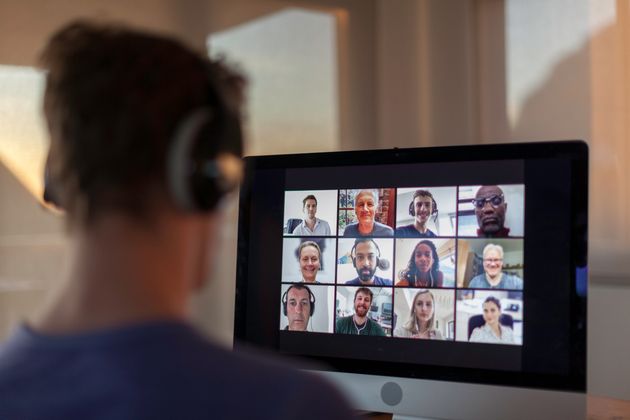
On a recent Zoom call with a friend, I was asked a favour. “Do you mind if I look at my other computer when we’re talking?” he asked.
This, it turns out, was a fairly normal request. Since the start of the lockdown, the company he worked for had provided special technology he’d need to work from home.
It would allow him to perform all the tasks he’d normally do in the office, and access advanced software that would have normally been only available in-house.
The trade-off, however, felt more sinister. He would be more closely monitored and scrutinised while working remotely. And that included his company knowing not just how long he was on his work computer, but also, how regularly he was typing.
His company’s rationale was that the added surveillance measures placed on their employees was necessary to ensure the company could function in the long term, that excessive monitoring would be a temporary measure that would keep the company afloat.
Indeed, his company was one of many that had invested in tracking technologies designed to closely monitor and analyse the behaviour of their employees.
Since the start of the pandemic, tech companies such as InterGuard, Hubstaff and Vericlock – just some of the software than can track everything from the amount of hours one spends on a laptop, to the type of content they are viewing and how long they spend on specific websites – have all seen sales increases.
Until recently, even widely used platforms like Zoom had functions where bosses could check on their employees without them being aware, and functions that would demand their attention at a whim.
Though online privacy advocates and some professional business bodies have warned that such monitoring technology might have a detrimental effect on productivity, while also causing employees to distrust their bosses, this hasn’t dissuaded some companies from investing in software so complex that it not only tracks how long one of their employees is online, but also, how often they are actually looking at their computer screen.
To my friend, much like other employees, this is now a normal part of work. But, the increase in employee surveillance around the world brings with it more urgent questions as we imagine what work in a post-covid world might look like: Namely, do the benefits of working from home, being relieved of cramped commutings and store-bought sandwiches, outweigh the costs of further intrusion, surveillance, and the sacrifice of even more privacy?
The introduction of these complex monitoring tools are relatively new in white-collar working environments, where monitoring often takes place within the office’s network itself.
Where monitoring software like keyloggers and facial recognition tracers might feel like a novelty, it’s in lower-paid work where we can see the effects of persistent monitoring.
In some restaurants, for example, the New York Times reports that spyware that had been supposedly designed to track theft is often used to track the “productivity” of wait staff based on their physical movements between the kitchen and dining areas.
In China, some construction companies are reportedly making workers wear wristbands that can detect fatigue based on brainwaves and a pulse – using this data to decide how many breaks workers are allowed, or, if they are deemed too “unproductive” to be kept onto the workforce.
It’s not just in productivity, where software companies have benefitted from creating spyware, though. A recent VICE investigation found that corporations like Amazon had used spyware to find and access private groups on Facebook where warehouse staff, delivery drivers and other low-wage contractors communicated with each other.
Rather than being novel, this was just another example of Amazon leveraging surveillance technology to monitor its workers, alongside software that, while designed to “maintain social distancing” has received backlash from its own workers on the basis that it was actually being used to force workers to fulfil their quotas, and prevent them from even taking toilet breaks.
We should remember the aspects of office life that have been primary causes of anxiety and stress can easily be replicated in our home environments too – only this time, it will be far more difficult to switch off.
The civilian surveillance technology industry is one of the most lucrative in the world, and as the pandemic has gone on, it has grown into a multi-billion dollar industry, with no signs of slowing any time soon.
Part of that may very well be offices trying to adjust to remote working at short notice. But, as a New York Times investigation showed earlier this year, the valuable element of surveillance software isn’t the ability to co-ordinate teams or help people be more productive at work.
Rather, it is the extraction of even more data, that can be sold and distributed to other technology companies building surveillance software. The Times’ investigation showed that even the most basic software was able to track everything from GPS coordinates to the general trends of an individual’s browsing histories – which could be used to paint a picture of what kind of worker someone was, and, by extension, how “valuable” they might be to a company in the future.
Though users could “game” the software – by using Virtual Private Networks to mask their locations, or using different computers while working from home, the purpose of the spyware wasn’t just to keep employees focussed on a particular task, but rather, to assess how “disposable” they are.
As the British government is encouraging people to return to their offices, in spite of the health risks associated with urban commuting and working, it also faces a public that have not only grown more accustomed to working from home, but have also experienced health benefits from doing so.
This should be welcomed. But we should also remember that the aspects of office life that have been primary causes of anxiety and stress, can easily be replicated in our home environments too – only this time, it will be far more difficult to switch off.
Hussein Kesvani is UK and Europe editor of MEL magazine and author of Follow Me, Akhi: The Online World of British Muslims.




